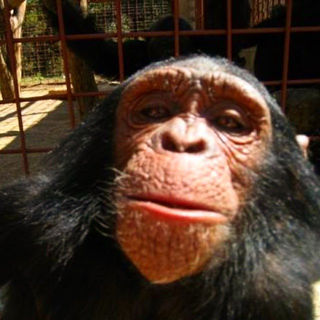Humor
The Evolution of Humor: From Grunts to Poop Jokes
To understand the psychology of humor, we must understand its origins.
Posted November 23, 2016
Mark Twain, arguably one of the greatest American humorists, remarked that “humor is mankind’s greatest blessing.” Indeed, some have argued that the human capacity for humor is what distinguishes our species from others. But humor as we understand it today did not just appear suddenly—it is probably the result of millions of years of evolution.

In its earliest forms, humor likely evolved from panting and grunting that occurred during non-serious fighting or other forms of play, or during social “down time” among our ancient primate ancestors. Although there was nobody there to document the events with their cell phone, or to upload the video to YouTube, we can extrapolate from similar sounds and behaviors observed among modern primates. Over time, these sounds likely evolved into more specialized vocal sounds that we might now recognize as early forms of laughter (see Gervais & Wilson’s discussion of this). Early hominids that could make those early laughter sounds, and those who had the mental capacity to distinguish between laughter and non-laughter sounds, likely benefitted from stronger bonds with other individuals within their group.
Think of it this way. “Funny” primates or early hominids were those who could make sounds that said, “We’re safe and happy now: Everybody relax and pick some bugs off each other. Eat them if you’re hungry.” They could also identify those sounds when others in their social group made them, taking the context into account, and could respond appropriately. “Non-funny” primates didn’t pick up on the signals. They would get angry with others who were only trying to play, and might lash out inappropriately—this is not a good strategy for making friends or finding mates. In today’s world, these are the people at work you “forget” to invite to happy hour. Similarly, primates who mistook “danger” vocalizations for play vocalizations were the ones who let their guard down, showed up in the clearing with their rubber chicken and Groucho glasses, and became lunch for a prowling saber-toothed tiger.
Becoming tiger-lunch makes it exceedingly difficult to pass on one’s genes. Those that could make and identify laugh-like sounds in others were probably more likely to reproduce and pass on genes that helped their offspring create and/or distinguish between “play” and “not-play” sounds. Those with mutations that allowed them to make even better sounds, and detect the meaning of those sounds, were even more likely to form strong bonds, survive, and pass on their genes, and so on.
Leap forward a million years or so.
Humor has developed in the human species as a much more subtle collection of behaviors and mental abilities. At its core, humor involves the ability to detect and to create incongruities. Among our ancient ancestors, the incongruity might have been between behavior that looked like fighting, but which was understood as non-serious or “play” behavior because it was accompanied by cues such as laugh-like sounds. But as our cognitive abilities have progressed, in parallel with language abilities, so too has our ability to create and appreciate more complex and sophisticated incongruities (see Murray Davis’ terrific book, 1993, and an excellent article by Wyer & Collins, 1992, for more thorough discussions of humor and incongruity).
Take the joke form “A [blank] walks into a bar….” where [blank] can represent just about any category of person or thing that would not normally walk into a bar (e.g., a fly). The incongruity is established by contrasting two things that don’t seem to go together: Flies don’t walk into bars. Humans have evolved to want to understand things, and jokes represent puzzles that we don’t understand but want to solve. Not knowing makes us a little uncomfortable, and makes our brains whirr (OK, that’s not the technical term, but you get the idea). Because humans have extensive libraries of abstract, complex, and symbolic ideas accessible in their memories, they begin to search for ways in which those two things go together: how can the story be completed such that I can make sense of a fly being in a bar? But the puzzle cannot be resolved successfully (if it’s a good joke), and this makes us just a little bit anxious. Over time, we learn to find joking contexts and their mild anxiety a little bit delicious.
Enter the punchline: the fly walks up to a man at the bar and says “hey, I like that stool you’re sitting on.” Although the original incongruity between a fly and a bar is not directly resolved, the punchline offers a new way of viewing the original joke set-up: a stool can represent both something we sit on as at a bar, and “stool” meaning poop, and just as a person can sit on a bar stool, a fly can sit on a poop. The incongruity in the joke is resolved, as is our feeling of anxiety. Indeed, as we think about the joke more (or “elaborate” on it), there are additional layers of possible incongruity resolution that make the joke more amusing. For example, we might imagine people sitting at the bar on huge turds, and being fly-like, and that’s amusing because it is an elaboration on the incongruity. Similarly, we might mentally recoil a little bit at the scatological turn that the joke took, given societal norms against discussing poop: we unwittingly become complicit in the poop-joke by virtue of the fact that we understand both symbolic meanings of the word "stool."
Just as our ancient ancestors evolved to enjoy the simple play behaviors, early grunting/laughing sounds, and bonding that occurred during the process, so too can we highly evolved humans enjoy a good poop joke. Even though the humor that we appreciate tends to involve much more “play” with abstract and symbolic meaning than with physical play, the impact is no less real. Indeed, there is mounting evidence that the process of incongruity detection and resolution, and even the sound of laughter in others (see interesting work by Owren & Bachorowski, 2003), is associated with activity in regions of our brain that generates feelings of positive emotion.
Humor as a form of play, even at higher levels of play with complex thoughts and ideas, is associated with positive emotions, and with positive feelings about individuals we are with when we experience that positive emotion. As my colleague and I have noted elsewhere (Robert & Wilbanks, 2012), humor, positive emotions, and stronger interpersonal bonds operate in mutually reinforcing spirals that stimulate the production of humor, and seeking out individuals with whom we can laugh and feel closer.
Of course, the highly abstract and symbolic nature of humor allows for many different forms of humor, and allows for humor to be co-opted for many different uses. Humor can build and destroy, strengthen and weaken, honor and besmirch, and perhaps all of these at the same time. This complexity is what makes it beautiful, and of interest to me, and I suspect to many other psychologists. In future posts, I will explore some of those complexities, including the interplay between humor and culture, and humor in the workplace.
Photo Credit: “Chimpanzee_selfie” by Frontierofficial/CC by 2.0
References
Davis, M. S. (1993). What’s so funny? The comic conception of culture and society.Chicago, IL: University of Chicago Press.
Owren, M. J., & Bachorowski, J. A. (2003). Reconsidering the evolution of nonlinguistic communication:The case of laughter. Journal of Nonverbal Behavior 27(3), 183–200.
Robert, C., & Wilbanks, J. E. (2012). The Wheel Model of humor: Humor events and affect in organizations. Human Relations, 65, 1071-1099.
Wyer, R. S., & Collins, J. E. (1992). A theory of humor elicitation. Psychological Review, 99, 663-688.




